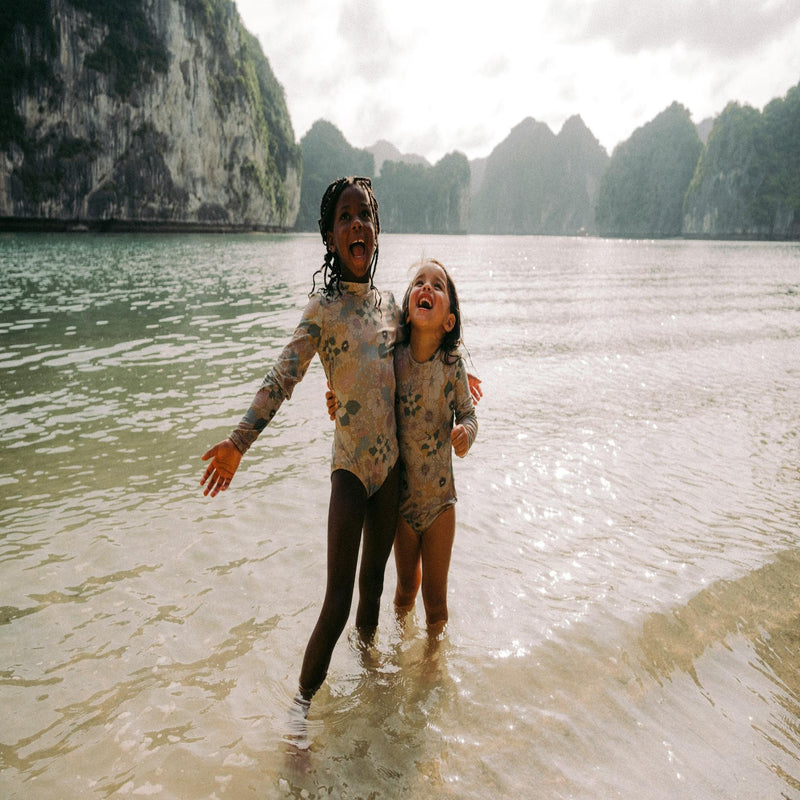
Growing Hearts of Gold: Raising Children Who Celebrate Differences 🌈❤️
Remember that magical moment when your toddler first made friends with someone completely different from them? That instant connection—without hesitation, judgment, or bias—is pure and beautiful. Children naturally begin life with open hearts. Our job isn't to teach them acceptance from scratch, but rather to protect and nurture their innate capacity for connection across differences as they grow and absorb messages from the wider world. 👶🤝👧
Why Raising Inclusive Kids Matters More Than Ever 🌍✨
Our children are growing up in the most diverse generation in history—a beautiful reality that brings both opportunity and responsibility. When we help children embrace differences with respect and kindness, we're not just raising nicer kids; we're building a more compassionate world.
Children who learn to value differences:
- Develop deeper empathy and emotional intelligence 🧠❤️
- Build more meaningful friendships across various groups 👫👭👬
- Think more creatively and solve problems more effectively 💡
- Navigate our diverse world with confidence rather than fear 🧭
- Become powerful forces for positive change 🦸♀️🦸♂️
The Kindness Mindset Journal helps children develop this empathetic mindset through thoughtful reflection about understanding and supporting others. 📔💕
Start with Curiosity: Wonder Before Judgment 🔍✨
The foundation of respecting differences begins with curiosity rather than fear or judgment. Help children cultivate a "wonder mindset" by:
- Responding to questions about differences with calm, matter-of-fact information
- Using the phrase "isn't that interesting?" when noticing differences
- Asking open-ended questions that spark exploration: "I wonder why people celebrate different holidays?" or "I wonder what it might feel like to use a wheelchair?"
- Modeling curiosity yourself when encountering new cultures, traditions, or ways of being
The Curiosity Mindset Journal nurtures this questioning mindset that helps children approach differences with openness rather than judgment. 🔍✨
The Language of Inclusion: Words That Build Bridges 🌉🗣️
The way we talk about differences powerfully shapes how children understand them. Consider these language shifts:
Focus on Personhood First ✨
Instead of: "The autistic boy" or "The blind girl" Try: "The boy who has autism" or "The girl who is blind"
Emphasize Commonality Alongside Difference 🧩
Instead of: "She wears a hijab because she's Muslim." Try: "She wears a hijab as part of her Muslim faith, just like we wear special clothes for our traditions."
Avoid "Normal" as the Baseline 📊
Instead of: "Normal kids and kids with disabilities" Try: "Kids with different abilities" or "Some kids use wheelchairs, some kids use their legs"
Celebrate Rather Than Tolerate 🎉
Instead of: "We need to accept people who are different." Try: "We're so lucky to know people with different experiences and perspectives!"
The stories in the My Furry Soulmates series model this inclusive language through animal characters who appreciate each other's unique qualities while finding common ground. 📚🦊
Beyond Awareness: Teaching Active Inclusion 🏃♀️💫
True inclusion goes beyond simply knowing about differences—it's about taking action to ensure everyone belongs. Help children develop these practical inclusion skills:
1. The Friendship Initiative 👋
Teach children simple ways to reach out:
- "Would you like to play with us?"
- "Do you want to sit with us at lunch?"
- "I like your drawing. Can you tell me about it?"
2. The Fairness Checker ⚖️
Help children notice and respond to exclusion:
- "Everyone should get a turn."
- "Let's make sure the rules work for everyone."
- "How can we change this game so Alex can play too?"
3. The Upstander Response 🛡️
Empower children to speak up when they witness unkindness:
- "I don't think that's fair."
- "In our class, we don't leave people out."
- "Would you like to play with me instead?"
4. The Perspective Seeker 👁️
Encourage children to consider others' experiences:
- "How might Jamal feel when he can't understand the instructions?"
- "What might make it hard for Sarah to join the game with her walker?"
- "What could we do to help them feel more included?"
The Confident Mindset Journal helps children develop the self-assurance they need to take these sometimes-courageous inclusion actions. 📝💪
Creating Meaningful Exposure to Differences 🌐🔄
Children can't learn to respect and celebrate what they never encounter. While your community may have natural diversity, you can intentionally expand children's exposure to differences through:
Diverse Books and Media 📚🎬
Look for stories featuring:
- Characters from various cultural backgrounds, family structures, and abilities
- Everyday stories where diversity is present but not the "problem" to solve
- Authentic representations created by members of the featured communities
Expanded Experiences 🧳
Seek opportunities to respectfully engage with different communities:
- Cultural festivals and celebrations
- Museums highlighting diverse cultures and histories
- Restaurants featuring cuisines from around the world
- Houses of worship during appropriate community events
Diverse Friendships 👭👫👬
Foster relationships across differences:
- Seek out inclusive playgroups or activities
- Help children maintain friendships with peers who have different backgrounds
- Create playdate opportunities with families different from your own
- Model diverse friendships in your own life
The Hard Conversations: Addressing Bias and Discrimination 🚫💬
As children grow, they will inevitably encounter negative attitudes about differences. Having age-appropriate conversations about bias, prejudice, and discrimination is essential:
For Younger Children (Ages 3-6) 🧸
- Focus on fairness: "Is it fair to leave someone out because they look different?"
- Correct misconceptions simply: "Actually, people can have many different skin colors, and all are beautiful."
- Use stories to illustrate kindness across differences
For Elementary Children (Ages 7-10) 🏫
- Introduce concepts of stereotypes and assumptions
- Discuss the difference between intent and impact
- Explore histories of different groups in age-appropriate ways
- Emphasize the importance of speaking up against unfairness
For Older Children (Ages 11+) 🎒
- Examine systemic aspects of inclusion and exclusion
- Discuss current events related to diversity and justice
- Explore their own identities and potential biases
- Empower them to be advocates for inclusion
Generosity: The Active Expression of Respect ✋🎁
True respect for differences naturally extends to generosity—sharing what we have with others. Nurture this quality by:
Modeling Generosity Yourself 👀
- Let children see you sharing resources, time, and attention
- Talk about why you give: "We're donating these books because everyone deserves good stories."
- Invite children to participate in your giving activities
Creating Giving Opportunities 🤲
- Help children select toys or clothes to donate
- Involve them in preparing care packages for those in need
- Support them in raising funds for causes they care about
- Encourage sharing special skills or talents with others
Celebrating Generosity When You See It 🎉
- "I noticed you shared your snack with Max today. That was really generous!"
- "The way you helped that younger child learn the game showed such kindness."
- "Your generosity made a real difference in how everyone felt included."
When Mistakes Happen (Because They Will) 🤕💭
Learning to respect differences is a lifelong journey with inevitable missteps. When children (or we!) make mistakes:
- Acknowledge the error without shame: "We all make mistakes while learning."
- Repair the harm: "Let's think about how we can make things better."
- Learn for next time: "What could we do differently if this happens again?"
- Move forward with new understanding: "Now we know, and we'll do better."
The Kindness Mindset Journal helps children develop the self-compassion needed to learn from mistakes rather than being defined by them. 📔💕
The Lifelong Journey: Beyond Childhood Lessons 🛣️🔮
When we teach children to respect and celebrate differences, we're not just preparing them for the playground—we're equipping them for life. Children who grow up valuing diversity become adults who:
- Build bridges across divides in their communities 🌉
- Create workplaces where everyone can contribute their best 💼
- Form families grounded in mutual respect and appreciation 👨👩👧👦
- Lead positive change toward a more just and inclusive world 🌍
The core mindsets nurtured by the Confident Mindset Journal, Curiosity Mindset Journal, Kindness Mindset Journal and the stories in the My Furry Soulmates series support this lifelong journey toward compassion, respect, and inclusion. 📚🌱
Starting Today: Simple Steps Toward Respect and Inclusion 👣💖
- Notice and name examples of respectful inclusion when you see them
- Choose one new book or show featuring diverse characters to enjoy together
- Practice perspective-taking during everyday situations: "How might they be feeling?"
- Look for an opportunity to experience a cultural tradition different from your own
- Start a gratitude practice that includes appreciation for differences: "I'm thankful for all the different languages in our class because..."
Join the Conversation! 💬❤️
How do you help the children in your life respect and celebrate differences? What challenges have you encountered, and what approaches have worked well? Share your thoughts and experiences in the comments below!
Remember: In teaching children to respect differences, we're not asking them to ignore what makes each person unique—we're inviting them to see that our differences make our shared human experience richer and more beautiful. The more we help children understand this truth, the more they'll create a world where everyone truly belongs. ✨🌎



0 comments